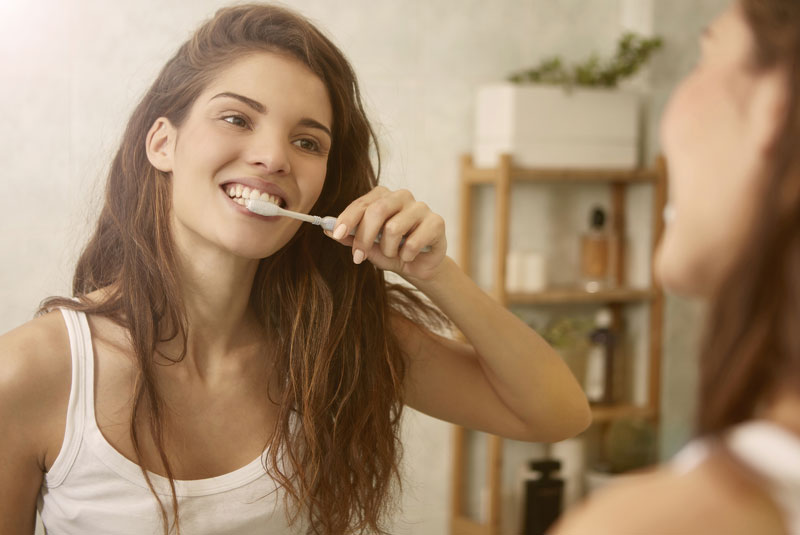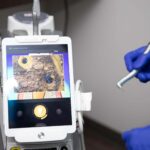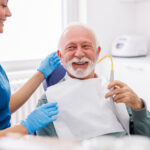Adopt A Schedule
Typically, oral hygiene procedures should not take more than 7 minutes of your day. Brush for 2 minutes in the morning and after dinner for 2 minutes. In each quadrant 30 seconds are devoted to top (coronal), outside (buccal) and inside (lingual) surfaces. Floss at night before bed. You should go to bed at your cleanest! If this is not your current technique, oral hygiene procedures may take you longer initially. Mouth rise is optional and can be used twice a day after brushing. Brushing and flossing mechanically remove bacteria whereas mouthwash cannot.
Tips For Better Brushing
Brush with the bristles aimed up at the gum at a 45 degree angle. Only soft and extra soft brushes are recommended because harder bristles can brush your gums away leading to recession or “gum loss”. Use your tooth brush with gentle circular movements for 30 seconds in each quadrant (upper right, upper left, lower left, lower right). Spend equal time in each area on the cheek and tongue sides. Both electric and manual brushes are used in the same way! Even though the electric brush bristles move on their own, they are to be used in a circular scrubbing motion just like a regular brush. If used incorrectly, gum disease may develop. Dr. Anderson uses a manual extra soft tooth brush in the morning and the electric brush at night. Ask the doctor if this is something that might work well for you if you have thin gums and gum recession.
Best Way To Floss Your Teeth
Wrap the floss string around middle fingers and use pointer fingers and thumbs to manipulate floss between the contacts. Most importantly, the floss should glide along the root surfaces in a “C” shape on both teeth associated with one contact. Flossing under the gum will not hurt your gum but rather not flossing at all will encourage disease to form! If flossing causes your gum to bleed, you need to floss more and see your periodontist. Although counter-intuitive to most, not flossing with cause more bleeding due to bacterial retention between the teeth. The body cannot flush bacteria out between your teeth and brushing cannot reach these areas either! Floss the ones you want to keep! Floss with textured or waxed floss as it is more effective than “gliding” or “silky” versions as they remove more bacterial plaque than their smoother counterparts. Ask Dr. Anderson for the floss she recommends and try it out!
Ask Dr. Anderson and her staff if you have any further questions!





